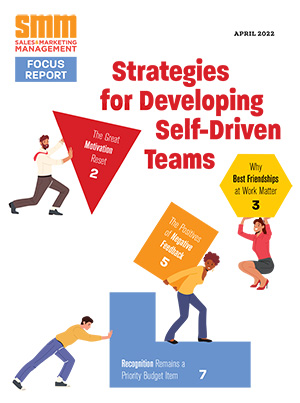While marketers have spent years developing data-driven approaches, we’re now witnessing a fundamental shift from passive analytics to active intelligence. This evolution is being powered by agentic AI systems – autonomous programs that don’t just analyze data but also make decisions and take actions based on that analysis.
As marketing stacks grow increasingly complex and customer expectations are also growing more sophisticated, these AI agents represent a critical breakthrough in how brands connect with audiences. To understand this transformation, we need to look under the hood at the technological foundations making it possible.
Inside the Engine: Agentic Frameworks Explained
What’s powering this leap to answers are new AI systems – notably agentic frameworks and communication protocols like Model Context Protocol (MCP) and Agent-to-Agent (A2A) – that enable autonomous decision-making in marketing operations.
Agentic frameworks are the software foundations for building AI agents – autonomous programs that perceive, decide and act. An agentic framework provides the blueprint for agents to communicate with each other, coordinate tasks, reason over context, and make decisions towards goals. In marketing, this means you can have a team of AI agents working together: one agent might analyze customer data, another generates content, another allocates budget – all orchestrated to achieve a campaign objective.
These frameworks (from open-source libraries to enterprise platforms) come with pre-built components for things like workflow orchestration and planning, so developers can deploy complex multi-agent systems more easily. The result is an “autopilot” layer for marketing: AI agents that can autonomously run and optimize campaigns across the marketing mix.
The Protocols That Power It All: MCP and A2A
Crucially, new communication protocols are emerging to connect these agents with tools and with each other. MCP, an open standard introduced by Anthropic, acts like a universal adapter between AI models and external systems. Think of MCP as HTTP for marketing data – it creates a universal language for AI to interface with databases, APIs and applications in the marketing stack. Instead of custom integrating every tool, companies can implement MCP once, letting an AI assistant access customer profiles, content libraries, analytics data and more through a standardized interface.
Since its launch, MCP has gained massive industry traction as the go-to standard for giving AI models access to a broad ecosystem of tools. In practical terms, MCP might let your AI marketing agent pull in CRM data, inventory levels or web analytics in real time to inform its decisions – all securely and in a structured way.
Meanwhile, A2A (Agent-to-Agent) protocol announced by Google in 2025 enables agents from different vendors or systems to talk to each other and coordinate actions. A2A is essentially a networking layer for AI agents – ensuring that an SEO optimization agent can collaborate with a content creation agent, or a sales lead-scoring agent can hand off tasks to a marketing campaign agent, even if they were built on different platforms. Over 50 major tech companies (from Atlassian to Salesforce) are already on board, supporting A2A as an open standard.
Together, A2A and MCP form the connective tissue of an agentic marketing ecosystem: MCP gives agents the context and data access they need, and A2A lets multiple agents jointly pursue complex marketing goals. This combination turns the vision of “answers, not just insights” into reality – enabling AI agents that don’t just analyze one dataset in isolation but integrate all your marketing knowledge and work in concert to drive actions.
Why This Matters: Strategic Implications for Marketers
With these powerful technologies now emerging, what does this mean for the future of marketing practice and the competitive landscape?
The shift from insights to answers powered by agentic AI systems represents nothing less than the future of marketing. We are witnessing marketing’s evolution from a labor-intensive practice of data interpretation into an intelligent, automated orchestration of customer experiences.
Organizations that embrace this model stand to gain a significant competitive edge. Market leaders are already investing: one survey found about 63% of marketers are using generative AI in some form and nearly 80% plan to expand AI usage in 2025.
Tech-forward sectors from e-commerce and retail to financial services are emerging as early leaders in applying agentic systems to personalize outreach and optimize spend in real time. They’re attracted by results like higher conversion rates, lower acquisition costs, and the ability to operate at a granularity and speed previously impossible.
Preparing for the Shift: Challenges and Considerations
As these protocols and frameworks mature, adoption will spread from digital natives to more traditional industries, enabling even highly regulated sectors to leverage AI “co-pilots” for marketing under proper governance.
In the coming years, we can expect the “insights to answers” approach to become commonplace. Dashboards and slide decks will give way to conversational AI briefings and autonomous campaign orchestration. The CMO’s team might include AI agents as just another set of colleagues – handling everything from media buying to content personalization – while humans set vision and ensure ethical, brand-aligned execution.
This transformation is not without challenges (organizations must adapt processes, upskill teams, and ensure AI ethics and brand safety), but the trajectory is clear. The brands that harness the answers flywheel will iterate faster and learn faster, creating a widening gap between those still mired in manual analysis and those operating with AI-augmented agility.
The Future of Marketing Is Answer-Driven
From insights to answers – it’s more than a catchy phrase; it signals marketing’s new modus operandi. We are moving into an era where asking a business question yields not a report, but a ready-to-implement solution.
The agentic AI revolution represents a watershed moment for marketing professionals, automating complex decision processes and enabling autonomous optimization that reshapes what’s possible in customer engagement. As protocols like MCP and A2A mature and gain wider adoption, we’ll see marketing evolve from a practice of manual optimization to one of strategic orchestration.
For forward-thinking organizations, the competitive advantages are clear: faster iterations, more personalized experiences, and the liberation of human talent for truly creative work. The technology is here, the standards are emerging, and early adopters are already seeing results.
For CMOs, the mandate is clear: it’s time to progress from just gleaning insights to delivering answers – because answers drive actions, and actions drive growth. The future of marketing isn’t just data-driven, it’s action-oriented and answer-focused, with agentic AI as its beating heart.





